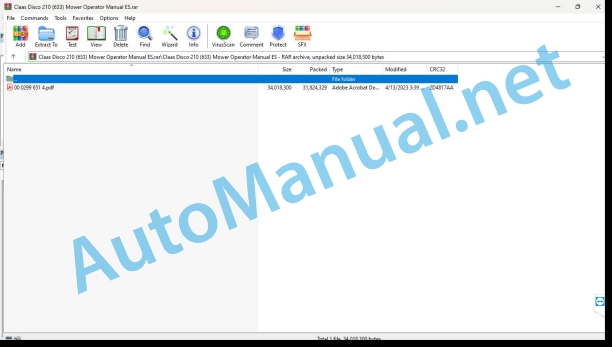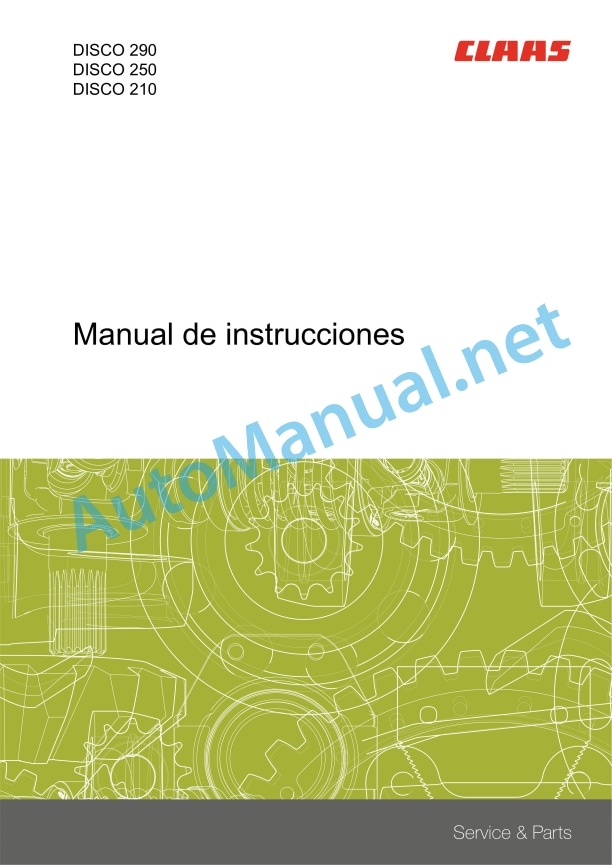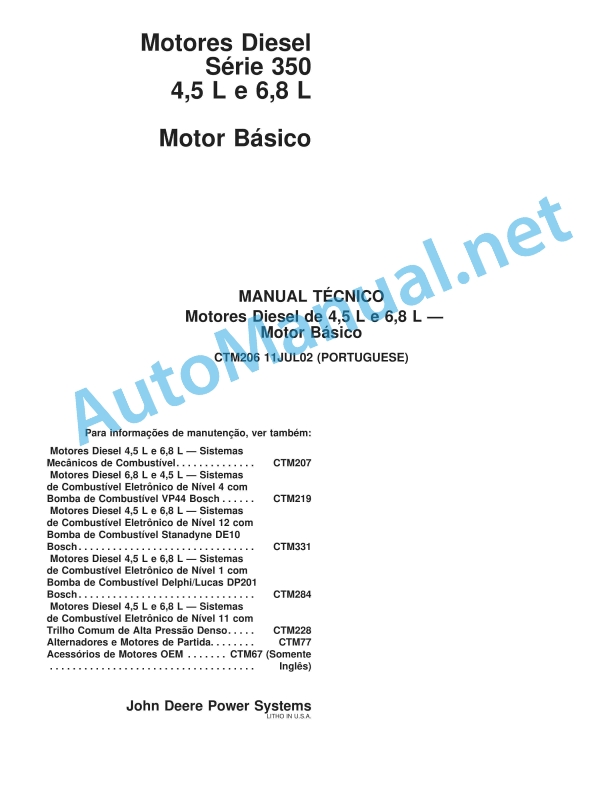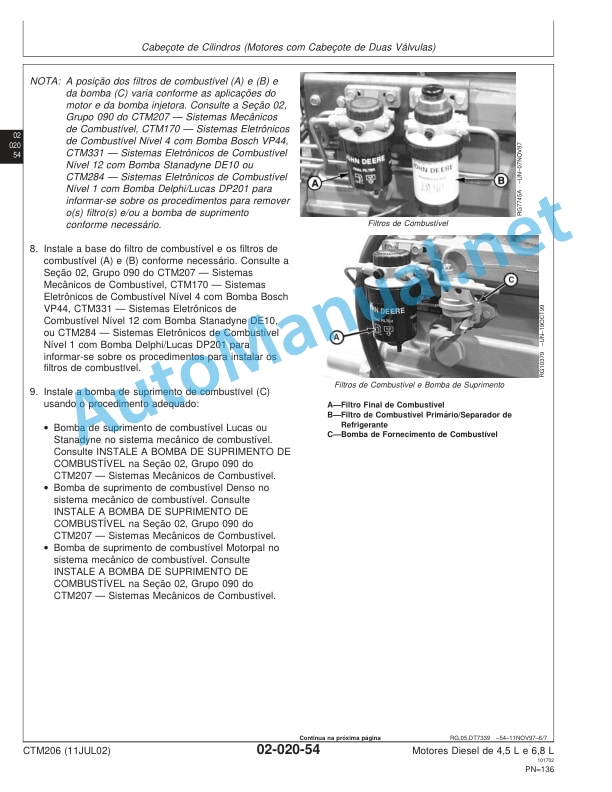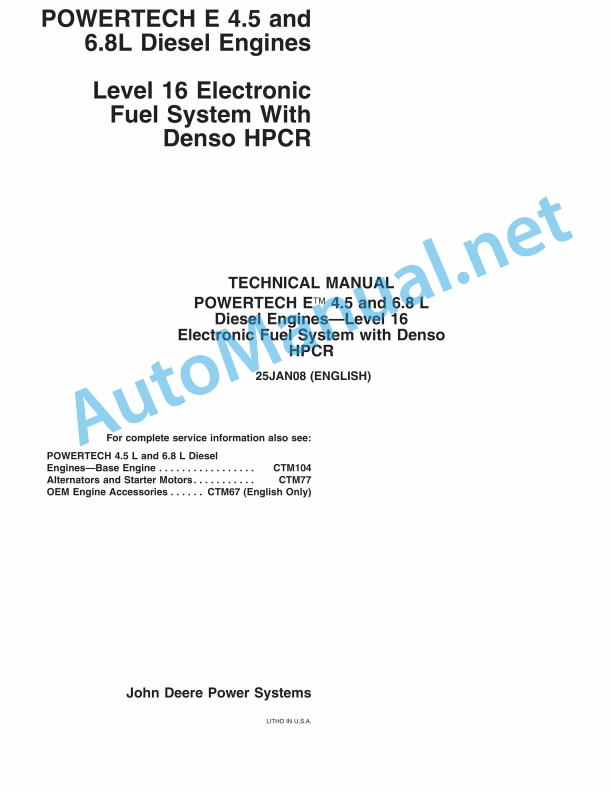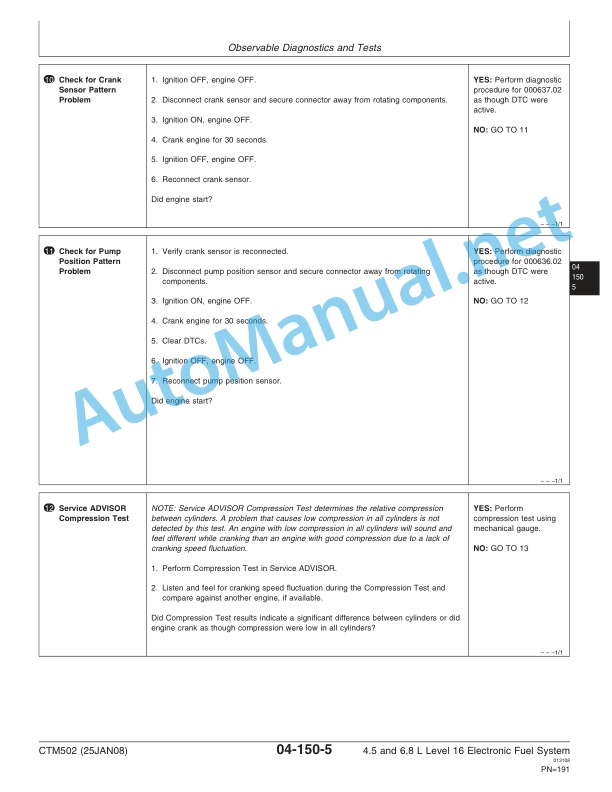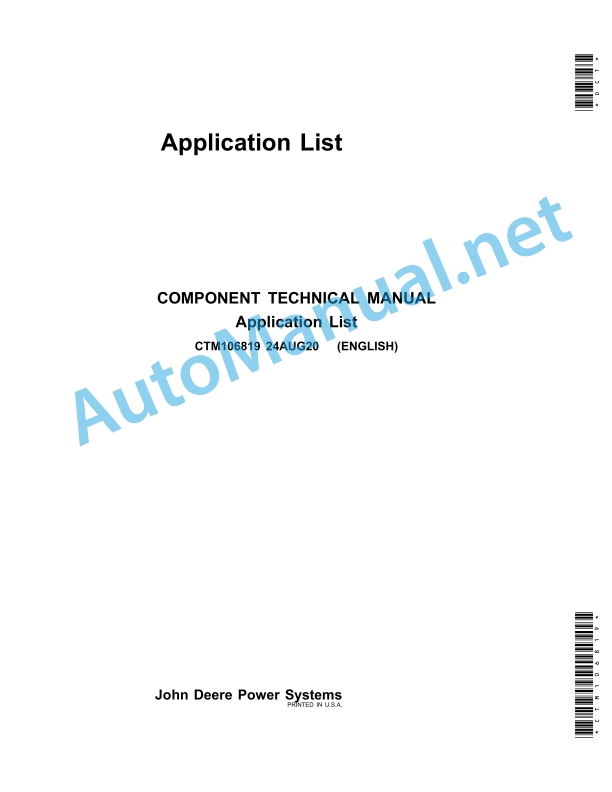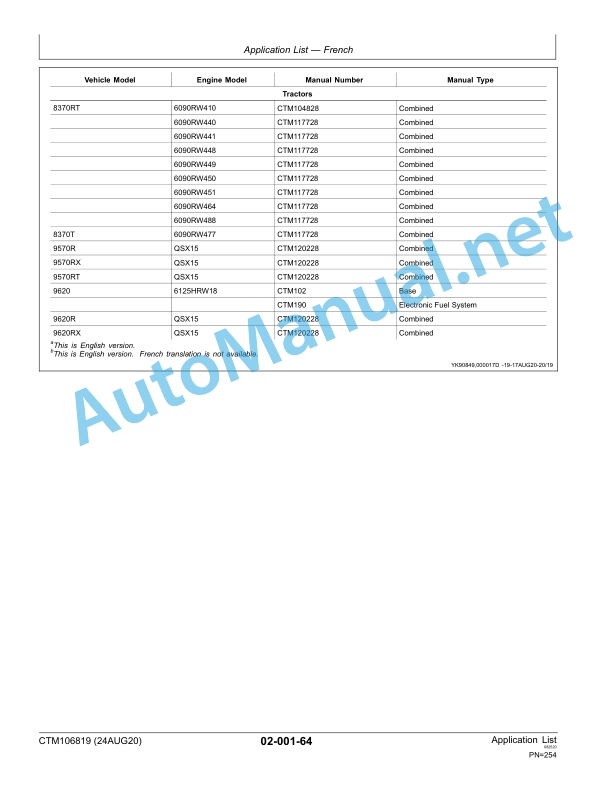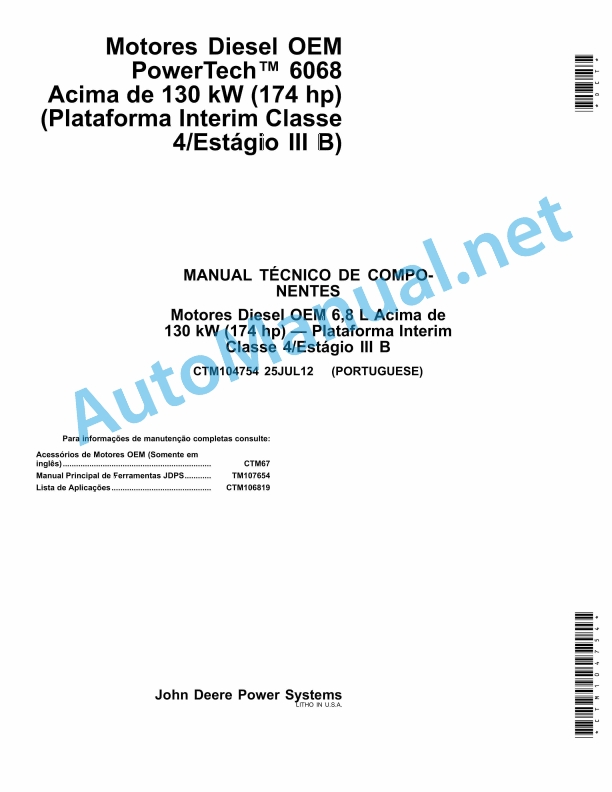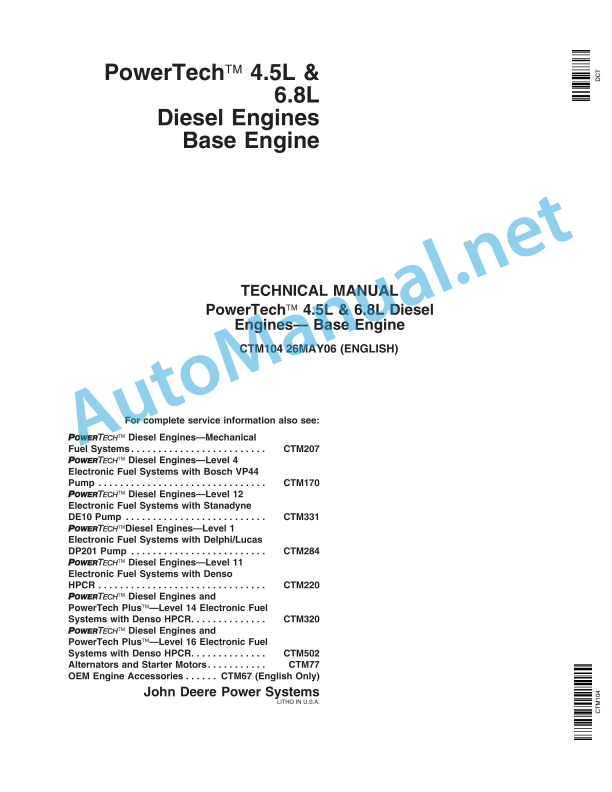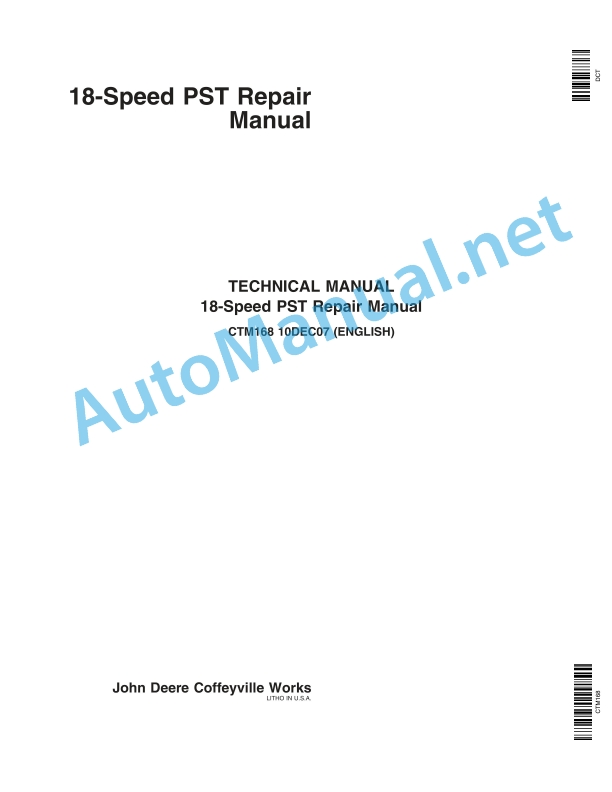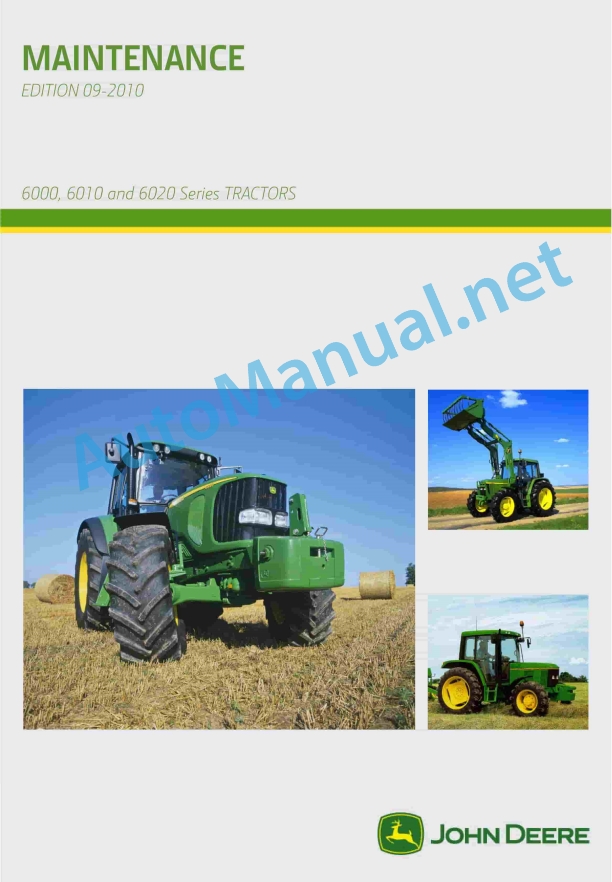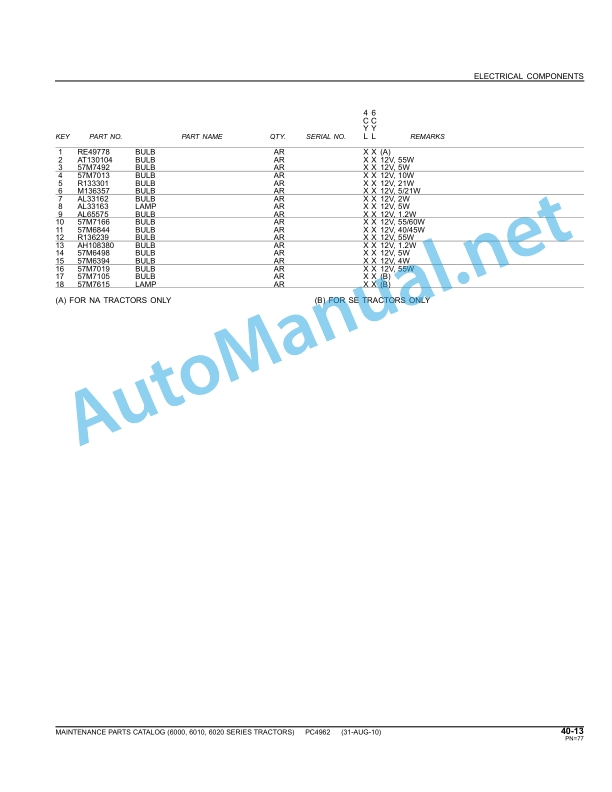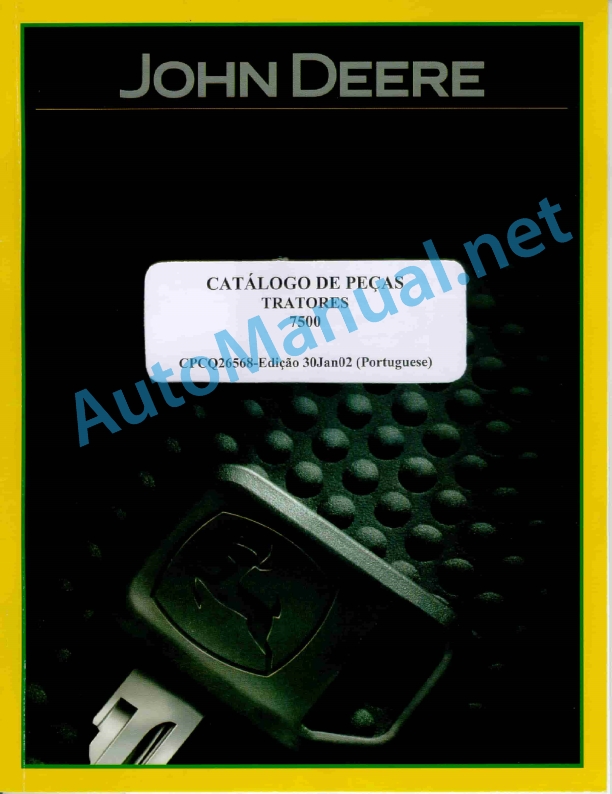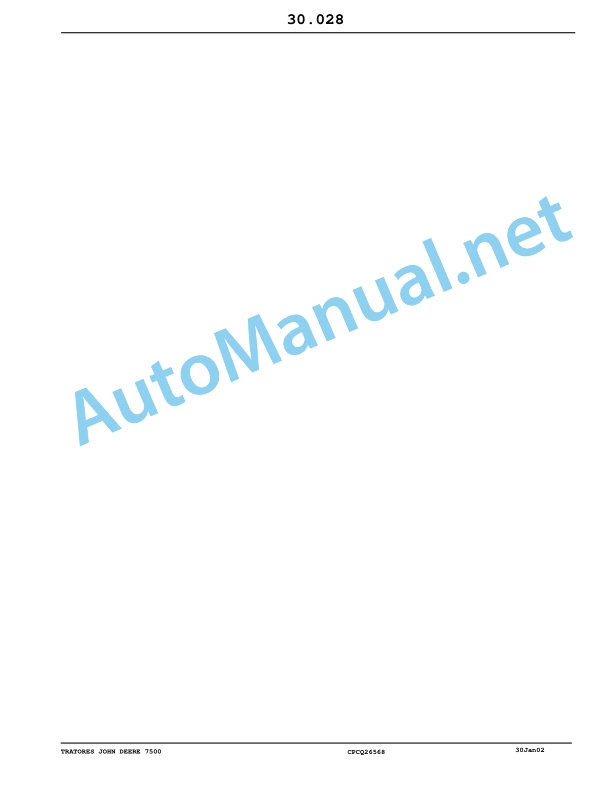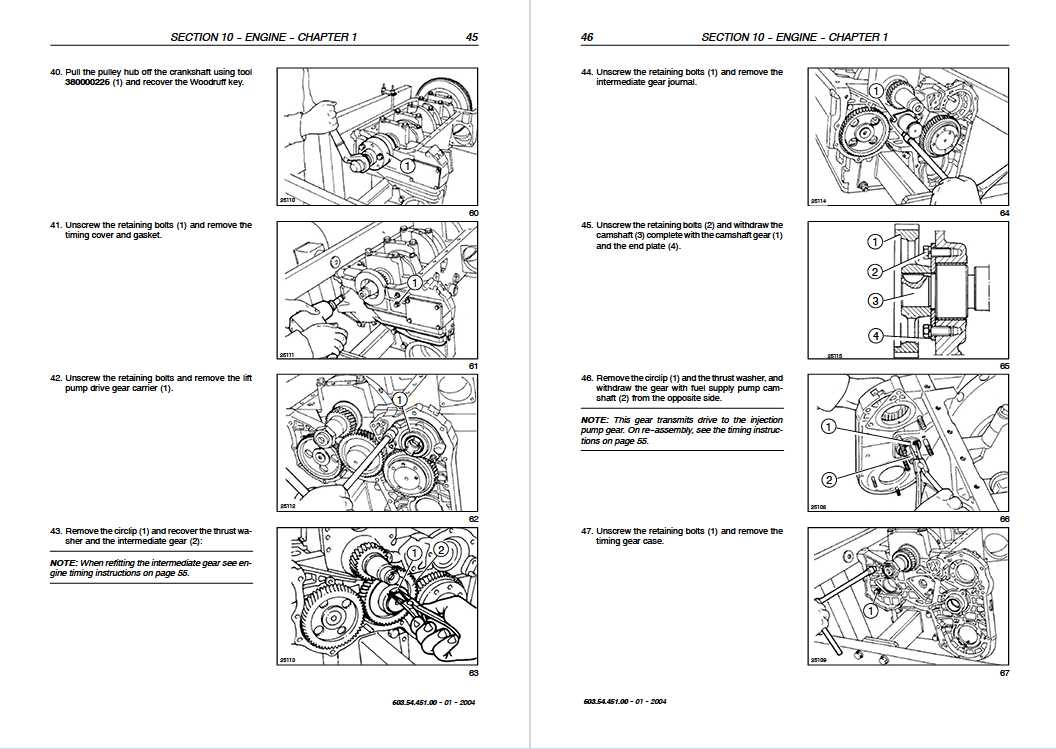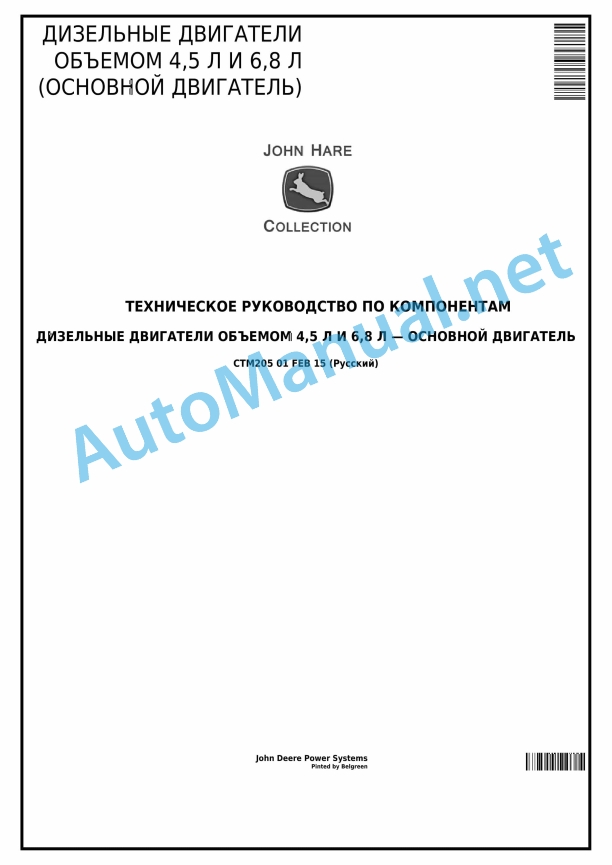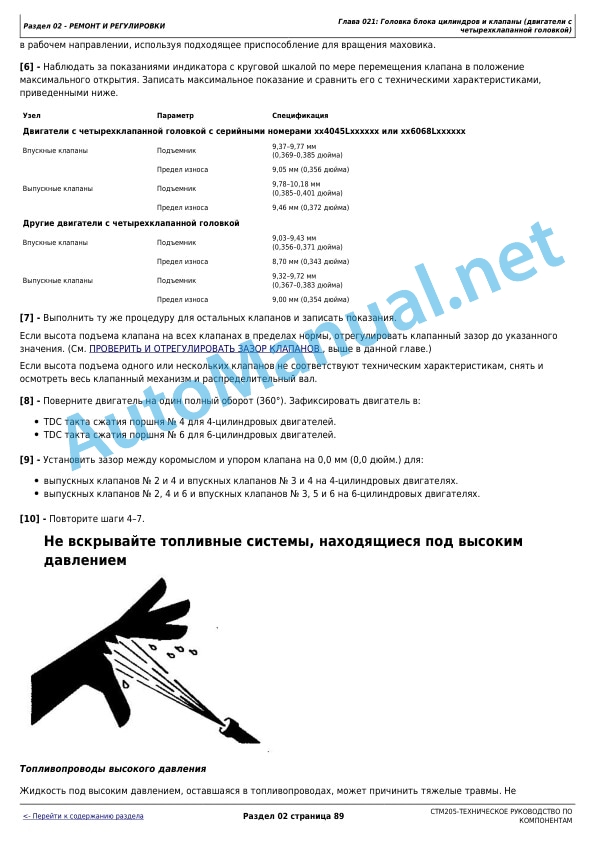Claas Disco 210 (633) Mower Operator Manual ES
$50.00
- Model: Disco 210 (633) Mower
- Type Of Manual: Operator Manual
- Language: ES
- Format: PDF(s)
- Size: 30.4 MB
File List:
00 0299 651 4.pdf
00 0299 651 4.pdf:
DISC 290DISC 250DISC 210
1. Introduction
1.1 Information regarding the instruction manual
1.1.1 Validity of the manual
1.1.2 Information relating to this instruction manual
1.1.3 Symbols and indications
1.1.4 Optional equipment
1.1.5 Qualified specialized workshop
1.1.6 Maintenance information
1.1.7 Information regarding warranty
1.1.8 Spare parts and technical questions
1.2 Proper application of the machine
1.2.1 Proper machine application
1.2.2 Logically foreseeable inappropriate application
2 Security
2.1 Recognize warning signs
2.1.1 Danger symbols
2.1.2 Keyword
2.2 Safety instructions
2.2.1 Meaning of the instruction manual
2.2.2 Observe graphic danger symbols and alarm indications
2.2.3 Requirements for all people working with the machine
2.2.4 Children in danger
2.2.5 Danger zones
2.2.6 Position yourself between tor and the machine
2.2.7 Accompanying persons
2.2.8 Couple the tractor with the machine
2.2.9 Risk of injury due to rotating shafts
2.2.10 Construction changes
2.2.11 Optional equipment and spare parts
2.2.12 Control of the machine in operation
2.2.13 Use only after correct start-up
2.2.14 Technical status
2.2.15 Danger due to damage to the machine
2.2.16 Comply with technical limit values
2.2.17 Danger due to coasting parts
2.2.18 Keep protective devices operational
2.2.19 Personal protective equipment
2.2.20 Wear appropriate clothing
2.2.21 Remove dirt and loose objects
2.2.22 Prepare the machine for road traffic
2.2.23 Dangers when driving on the road and in the countryside
2.2.24 Park the machine safely
2.2.25 Parking without supervision
2.2.26 Unsuitable consumables
2.2.27 Safe handling of consumables and auxiliary materials
2.2.28 Fire hazard
2.2.29 Environmental protection and waste disposal
2.2.30 Deadly electrical discharge through overhead lines
2.2.31 Behavior in the case of an overhead line voltage transfer and lightning strike
2.2.32 Noise can have negative consequences for health
2.2.33 Liquids under pressure
2.2.34 Hot surfaces
2.2.35 Work only on the stopped machine
2.2.36 Maintenance work and repair work
2.2.37 Lifted machine parts and loads
2.2.38 Danger from welding work
2.3 Safety signage
2.3.1 Structure of graphic hazard symbols
2.3.2 Position of warning symbols on the machine
3 Machine Description
3.1 Summary and operation
3.1.1 Machine overview
3.1.2 Summary of the direction of rotation of the mower discs
3.1.3 Machine operating mode
3.2 Optional equipment
3.2.1 High cut skates*
3.2.2 Wear pads*
3.3 Identification plates and vehicle identification number
3.3.1 Machine identification plate
3.4 Machine information
3.4.1 Adhesive on the machine
4 Control and display instruments
4.1 Control elements
4.1.1 Machine
4.2 Indicator elements
4.2.1 Chassis
5 Technical data
5.1 DISC290
5.1.1 Dimensions
5.1.2 Weight
5.1.3 Tractor requirements
5.1.4 Version
5.1.5 Acoustic intensity level
5.1.6 Lubricants
5.2 DISC250
5.2.1 Dimensions
5.2.2 Weight
5.2.3 Tractor requirements
5.2.4 Version
5.2.5 Acoustic intensity level
5.2.6 Lubricants
5.3 DISC210
5.3.1 Dimensions
5.3.2 Weight
5.3.3 Tractor requirements
5.3.4 Version
5.3.5 Acoustic intensity level
5.3.6 Lubricants
6 Preparation of the machine
6.1 Turn off the machine and secure it
6.1.1 Shut down and secure the machine and tractor
6.1.2 Secure the lifted machine
6.2 Access jobs and maintenance positions
6.2.1 Fold up the front protective shield
6.2.2 Fold up the rear protection shield
6.3 Adapt the tractor
6.3.1 Check the tractor ballast
Calculate the minimum front ballast
Calculate the minimum rear ballast
Calculate the actual load on the front axle
Calculate the actual total weight
Calculate the actual load on the rear axle
Calculation table
6.3.2 Check the tractor power take-off protection device
6.4 Adapt the machine
6.4.1 Cardan shaft – check the length
6.4.2 Adapt the length of the cardan shaft
6.4.3 Mount the cardan shaft on the machine
6.4.4 Adapt the lower bar bolt
The following options are available:
6.5 Hook up the machine
6.5.1 Attach the drawbar
6.5.2 Hook the arm to the third point
6.5.3 Assemble the cardan shaft
6.5.4 Attach the hydraulic hose
6.5.5 Place the support leg upwards
6.5.6 Place the pull ropes
6.6 Unhook the machine
6.6.1 Park the machine
6.6.2 Place the support leg down
6.6.3 Deposit the pull rope
6.6.4 Dismantle the cardan shaft
6.6.5 Unhook the third point arm
6.6.6 Unhooking the lower drawbar
6.6.7 Disconnect the hydraulic hose
6.7 Prepare for road traffic
6.7.1 Turn to transport position
6.7.2 Close the stopcock
6.7.3 Machine marking for road traffic
6.7.4 Check before driving on the road
6.8 Prepare the working position
6.8.1 Open the stopcock
6.8.2 Turn to working position
6.9 Load the machine
6.9.1 Load the machine
7 Management
7.1 Driving on the road
7.1.1 Driving on public roads
7.2 Settings for use at work
7.2.1 Adjust the frame
7.2.2 Adjust cutter bar discharge
Modify cutter bar discharge
7.2.3 Adjust cutting height
7.2.4 Retighten the crash protection
7.3 Use at work
7.3.1 Turn the machine into transport position
7.3.2 Turn the machine to the working position
7.3.3 Take into account during the field trip
7.3.4 Using the machine
7.3.5 Mowing technique
7.3.6 Raise the machine to the headland position
7.3.7 Setting the crash protection
7.3.8 Instructions on mowing
7.3.9 Difficult harvest conditions
7.3.10 Recommendation regarding environmental protection
8 Incident and solution
8.1 Summary of incidents
8.1.1 Incidents on the machine
9 Maintenance
9.1 Summary of maintenance intervals
9.1.1 Before harvest
9.1.2 After the first 50 hours of service
9.1.3 Every 8 hours of operation
9.1.4 Every 20 hours of service
9.1.5 Every 50 hours of service
9.1.6 Every 500 hours of service or annually
9.1.7 After harvest
9.2 Gearbox
9.2.1 Check the tightness of the gear
9.2.2 Check the bevel gear oil level
9.2.3 Change the bevel gear oil
9.3 Cardan shafts
9.3.1 Perform maintenance on the cardan shafts
9.4 Drive belt
9.4.1 Check the drive belts
9.4.2 Tension the drive belts
9.5 Hydraulic installation
9.5.1 Check the hydraulic hoses
9.5.2 Disassemble and install the hydraulic cylinder
9.6 Mowing device
9.6.1 Check the cutter bar oil level
9.6.2 Change the cutter bar oil
Drain oil
Fill oil
9.6.3 Check the mower blades
Check the mounting material of the mower blades
9.6.4 Replacing the mower blades
9.6.5 Clean the outlet hole of the feed drum
9.6.6 Check the feed drum wear strips
9.6.7 Check the feed drum cover
9.6.8 Check the feed drum sealing washer
9.6.9 Check the mower discs
9.6.10 Replacing the mower discs
9.6.11 Setting the winding protection
9.7 Assembly and body parts
9.7.1 Clean the machine
9.7.2 Maintain the machine
9.7.3 Check the fixing material
9.7.4 Check the support of the protective breastplate
9.8 Greasing scheme
9.8.1 Grease the lubrication points every 20 hours of service
9.8.2 Grease the lubrication points every 50 hours of service
10 Decommissioning and waste disposal
10.1 General information
10.1.1 Decommissioning and waste disposal
11 EC declaration of conformity
11.1 DISC 290 / 250 / 210
11.1.1 EC declaration of conformity
12 Technical dictionary and abbreviations
12.1 Terms and explanations
12.1.1 Technical vocabulary
12.1.2 Abbreviations
John Deere Repair Technical Manual PDF
John Deere Repair Technical Manual PDF
John Deere POWERTECH E 4.5 and 6.8 L Diesel Engines TECHNICAL MANUAL 25JAN08
John Deere Repair Technical Manual PDF
John Deere Application List Component Technical Manual CTM106819 24AUG20
John Deere Repair Technical Manual PDF
John Deere Repair Technical Manual PDF
John Deere Repair Technical Manual PDF
John Deere 18-Speed PST Repair Manual Component Technical Manual CTM168 10DEC07
John Deere Parts Catalog PDF
John Deere Tractors 7500 Parts Catalog CPCQ26568 30 Jan 02 Portuguese
John Deere Repair Technical Manual PDF

